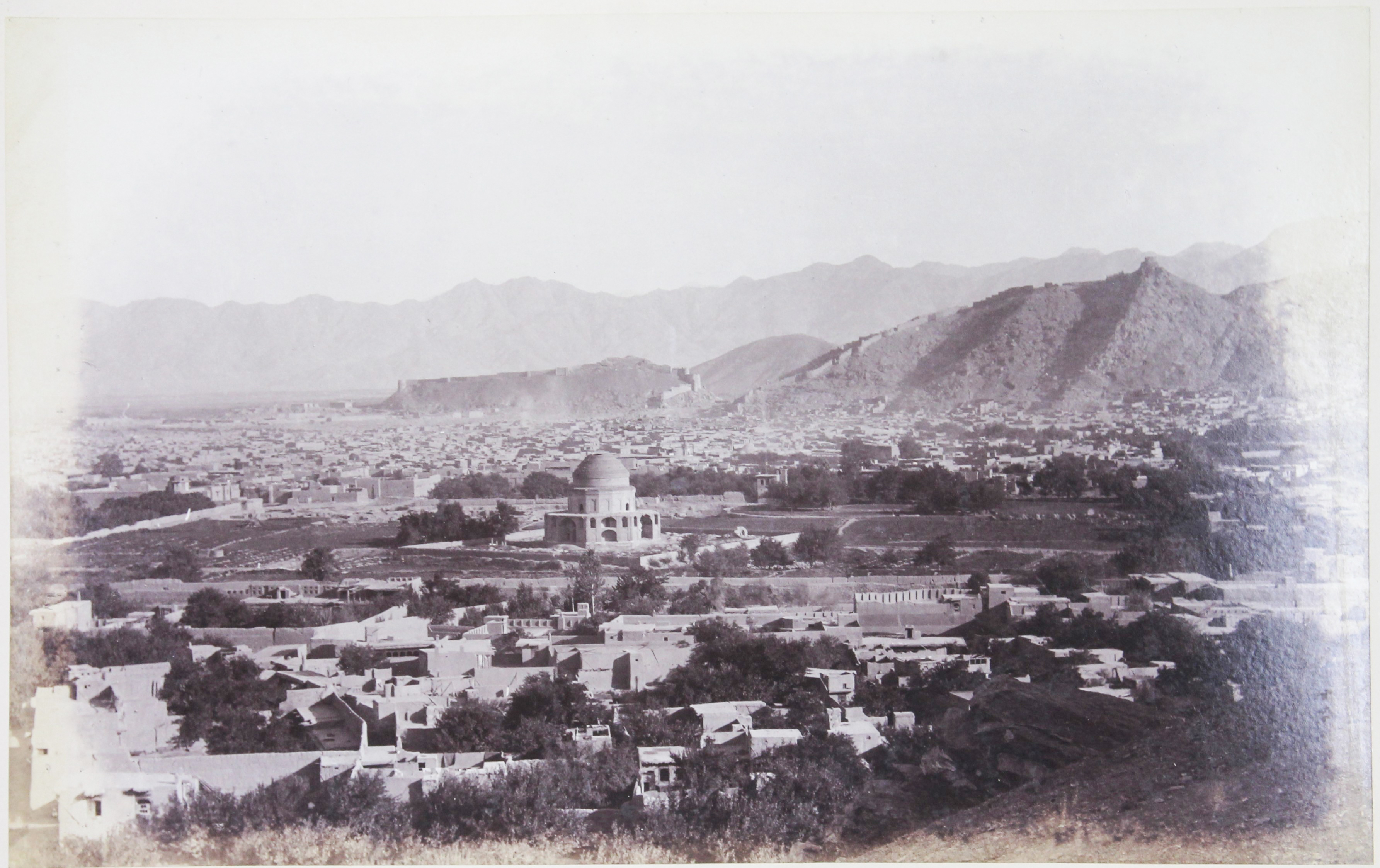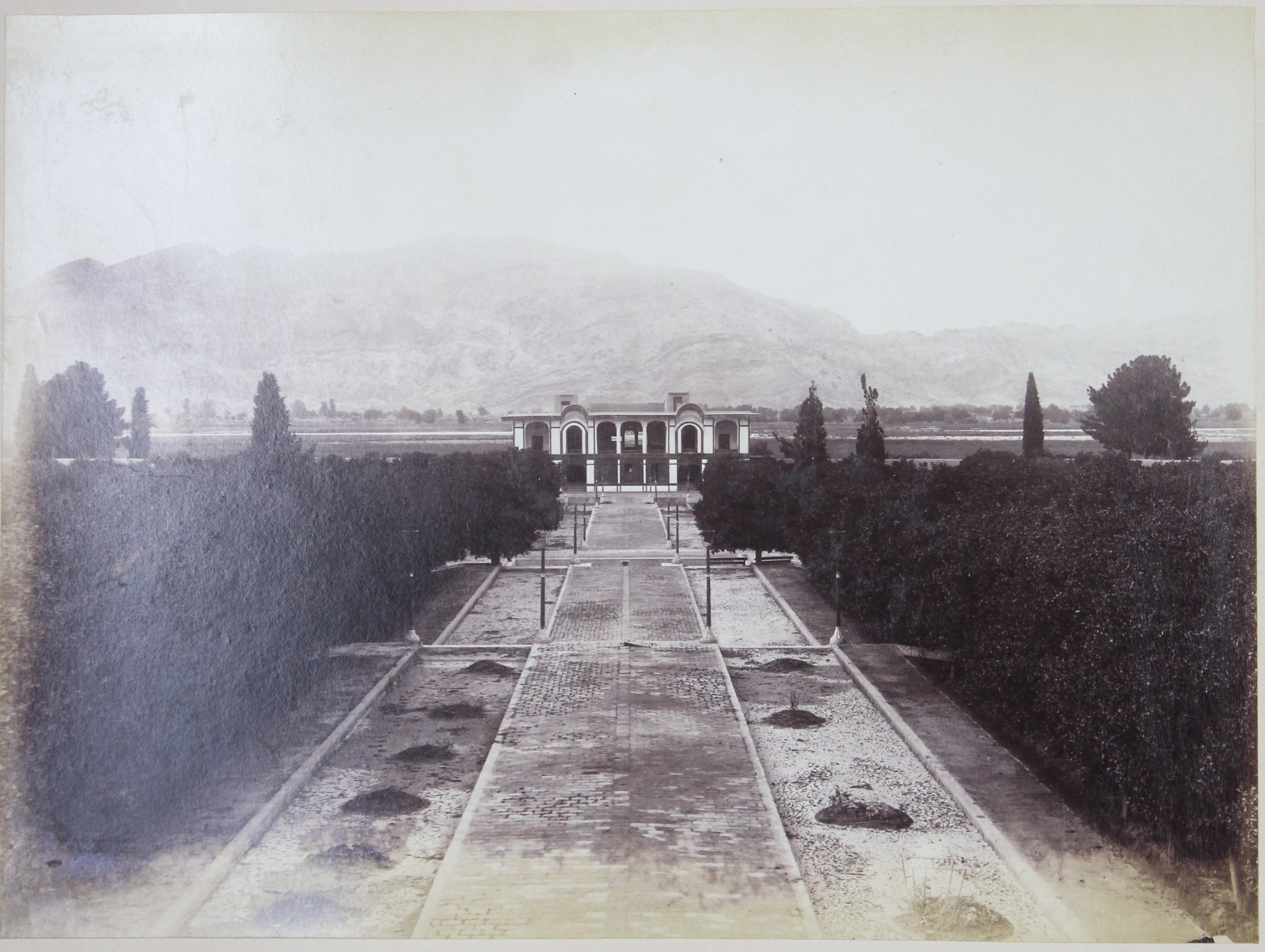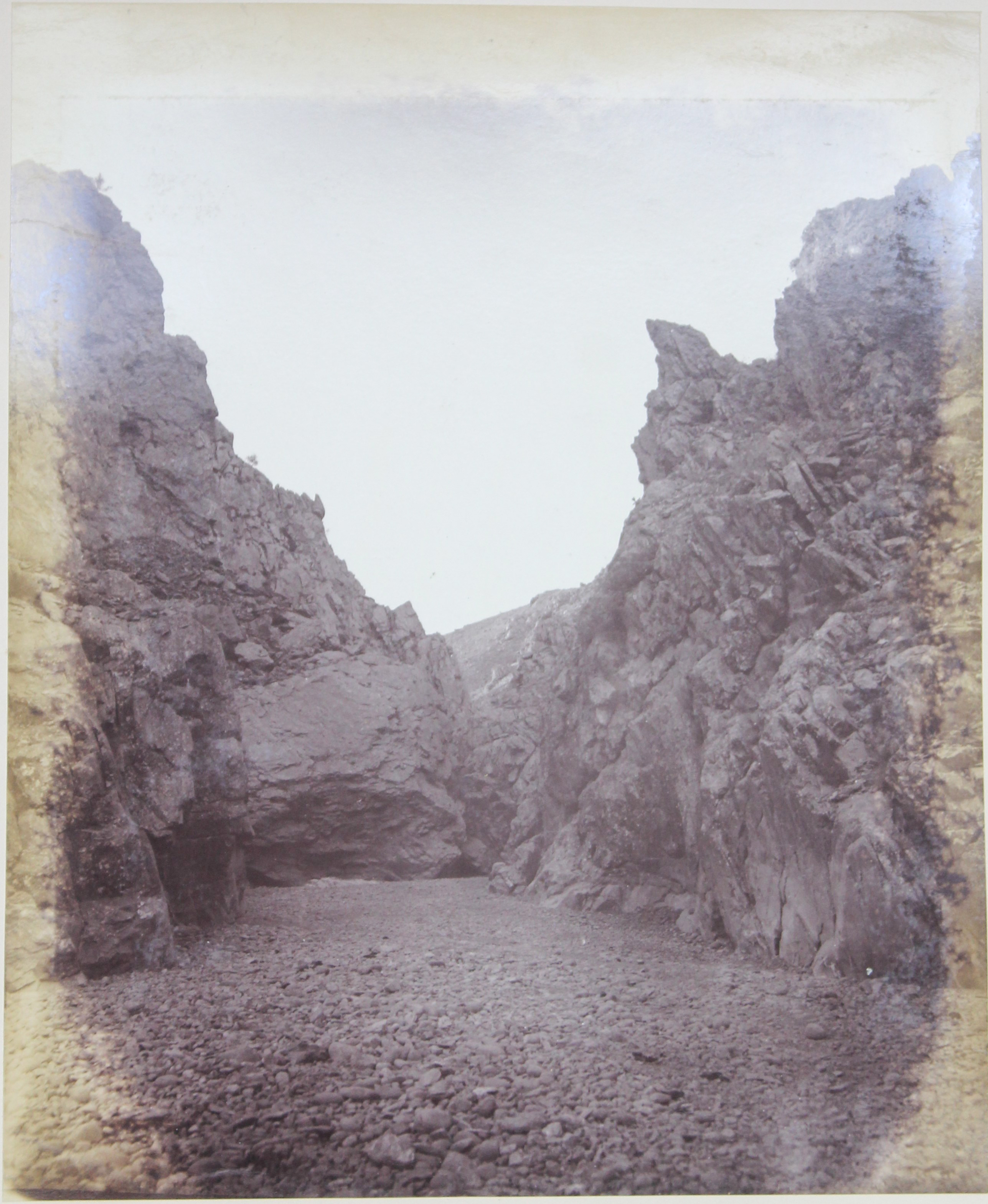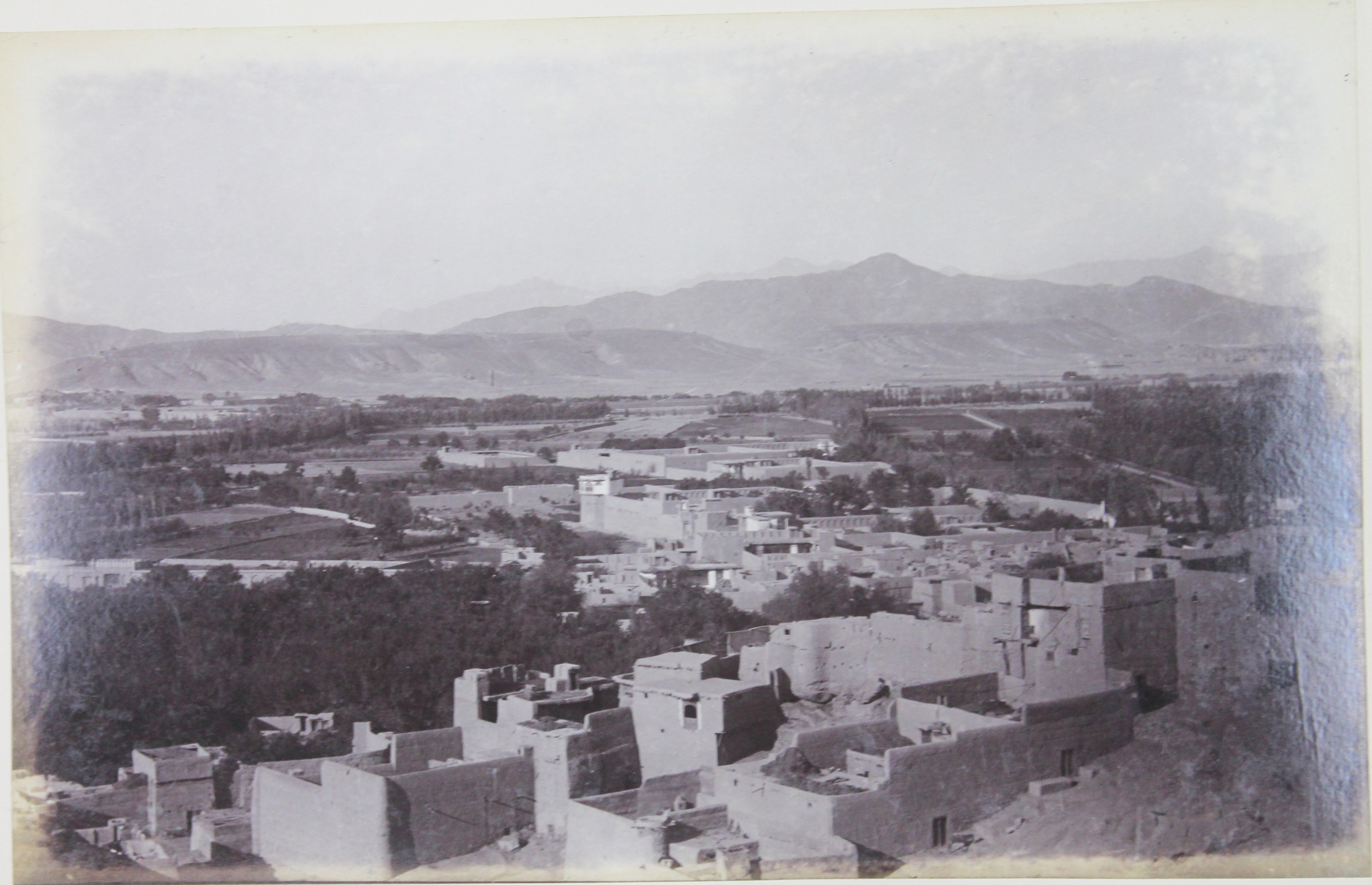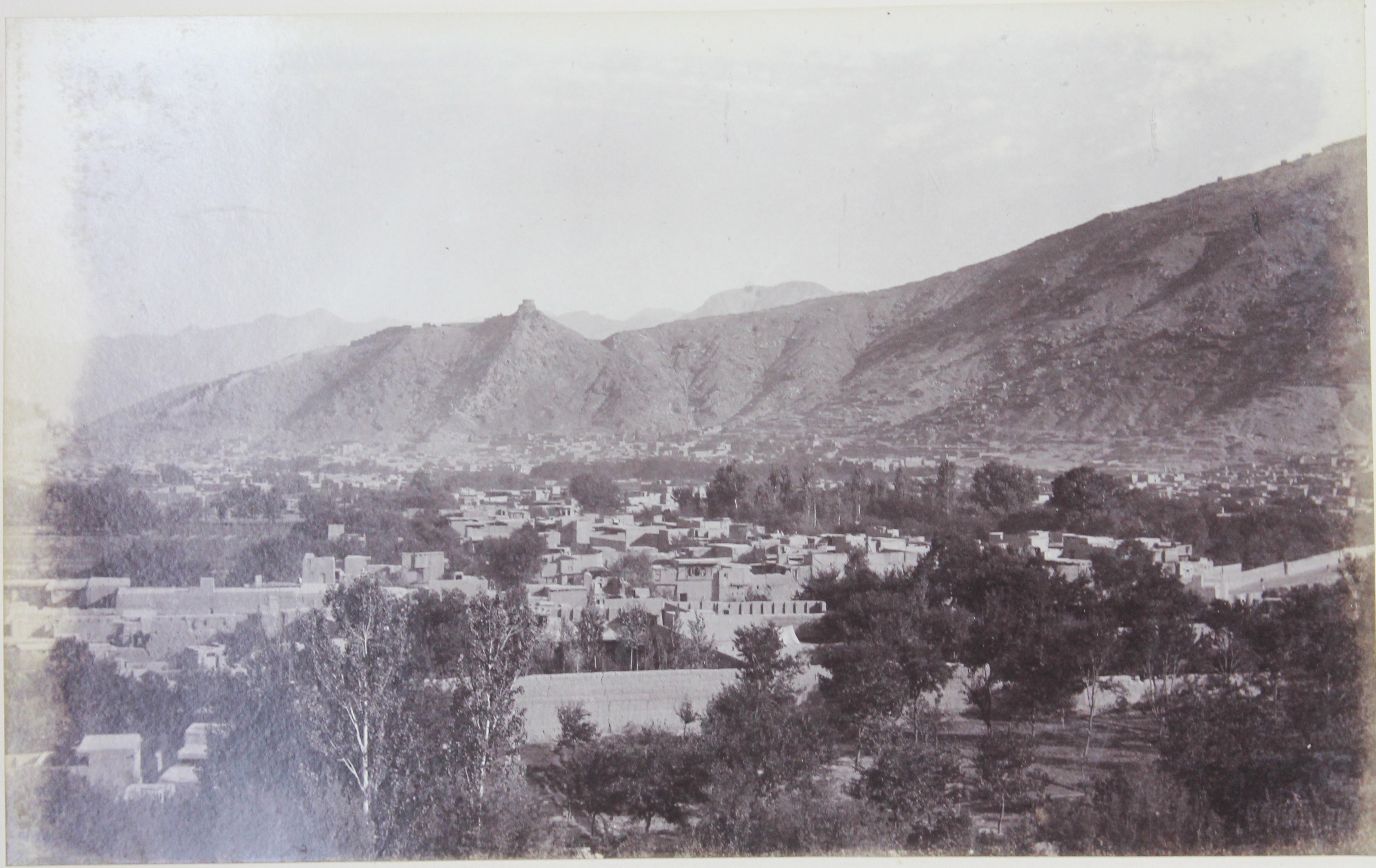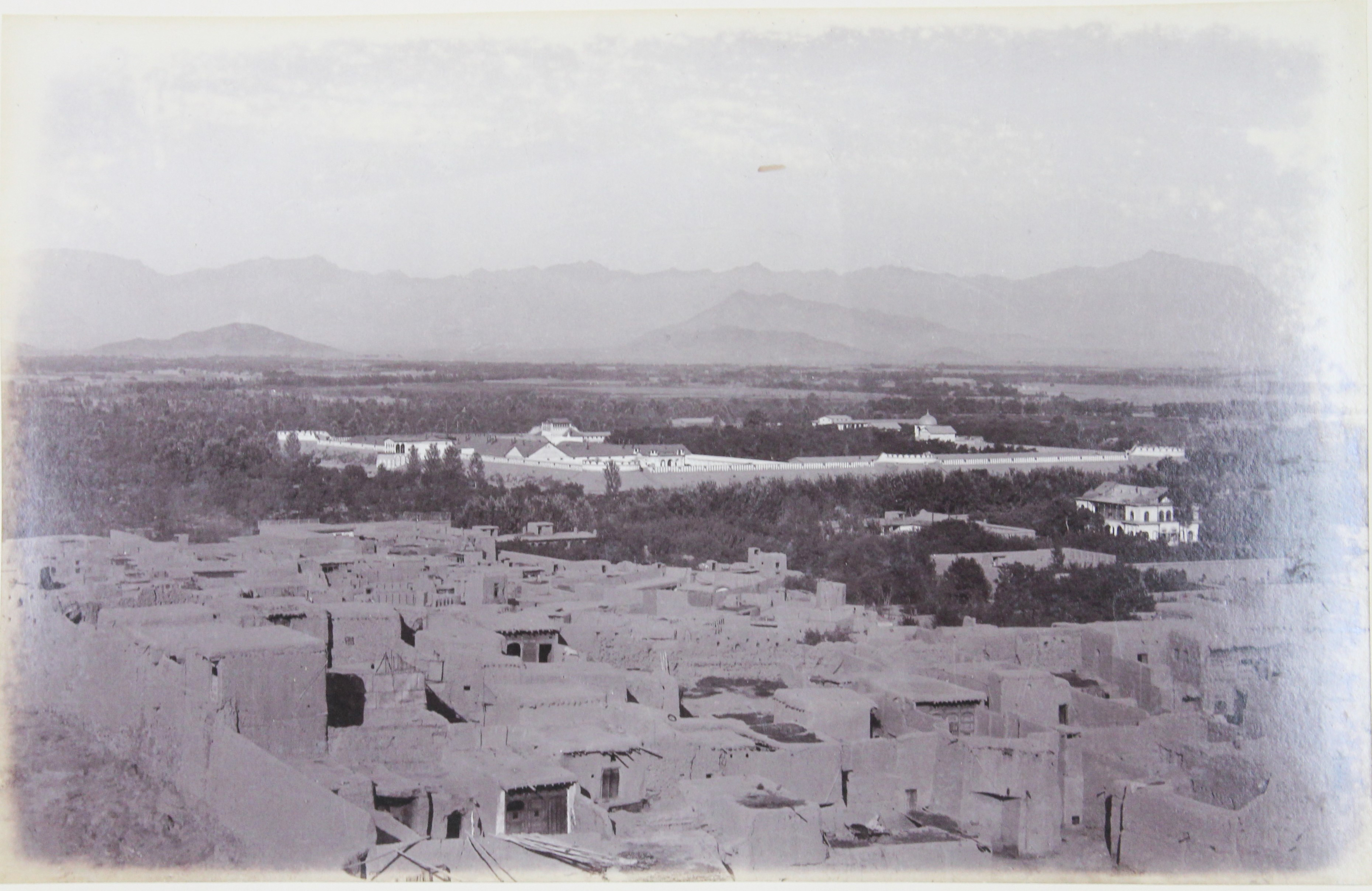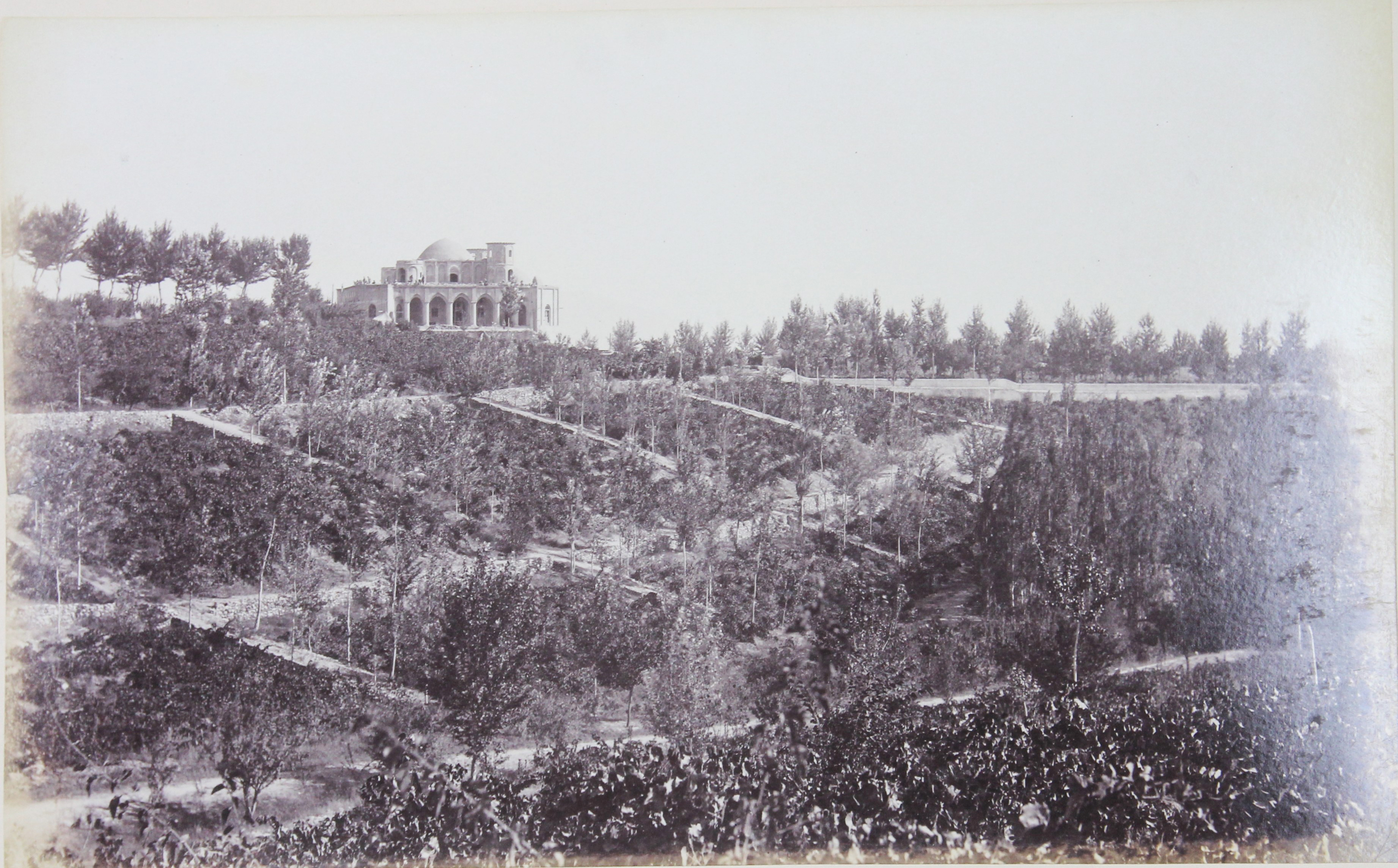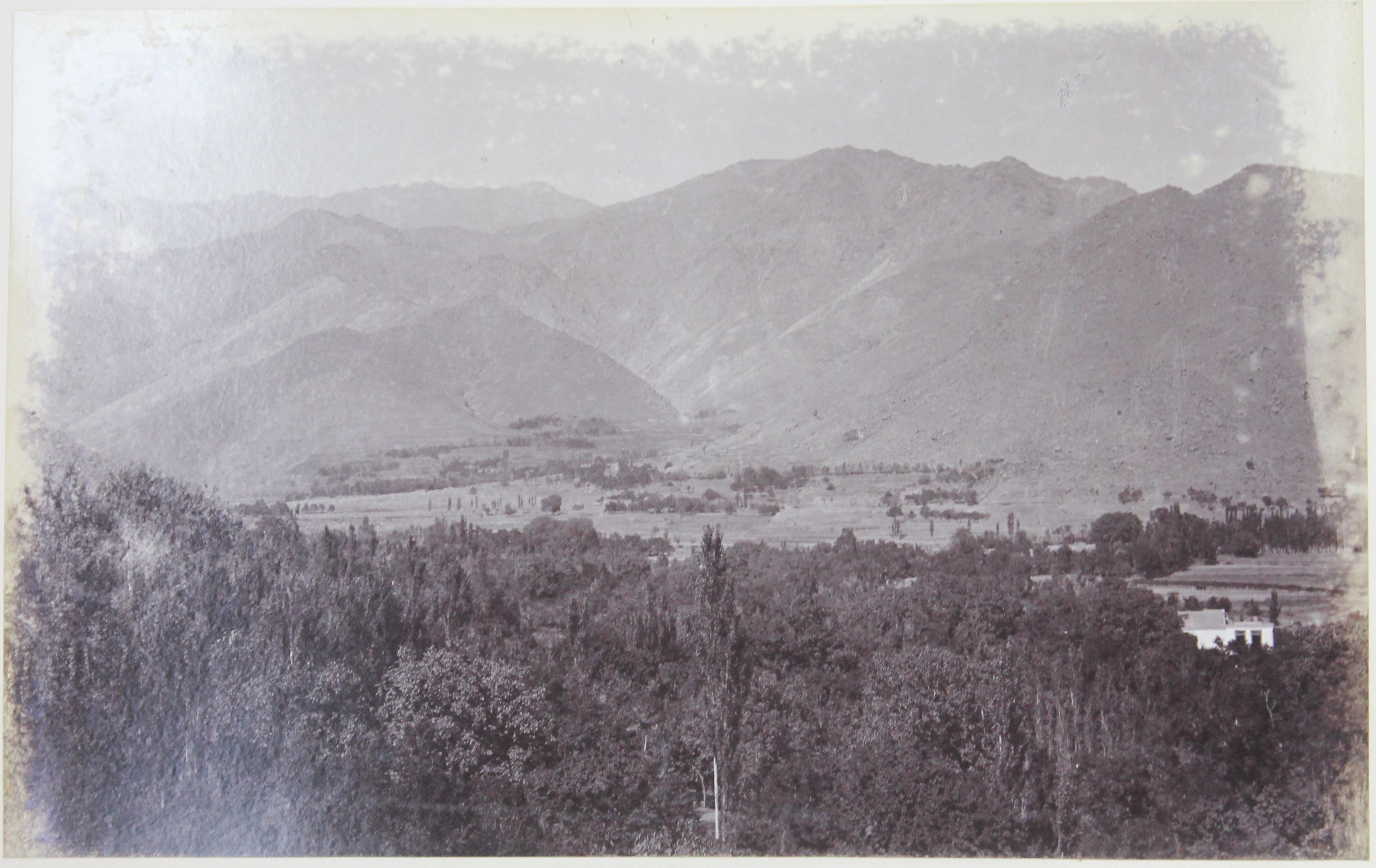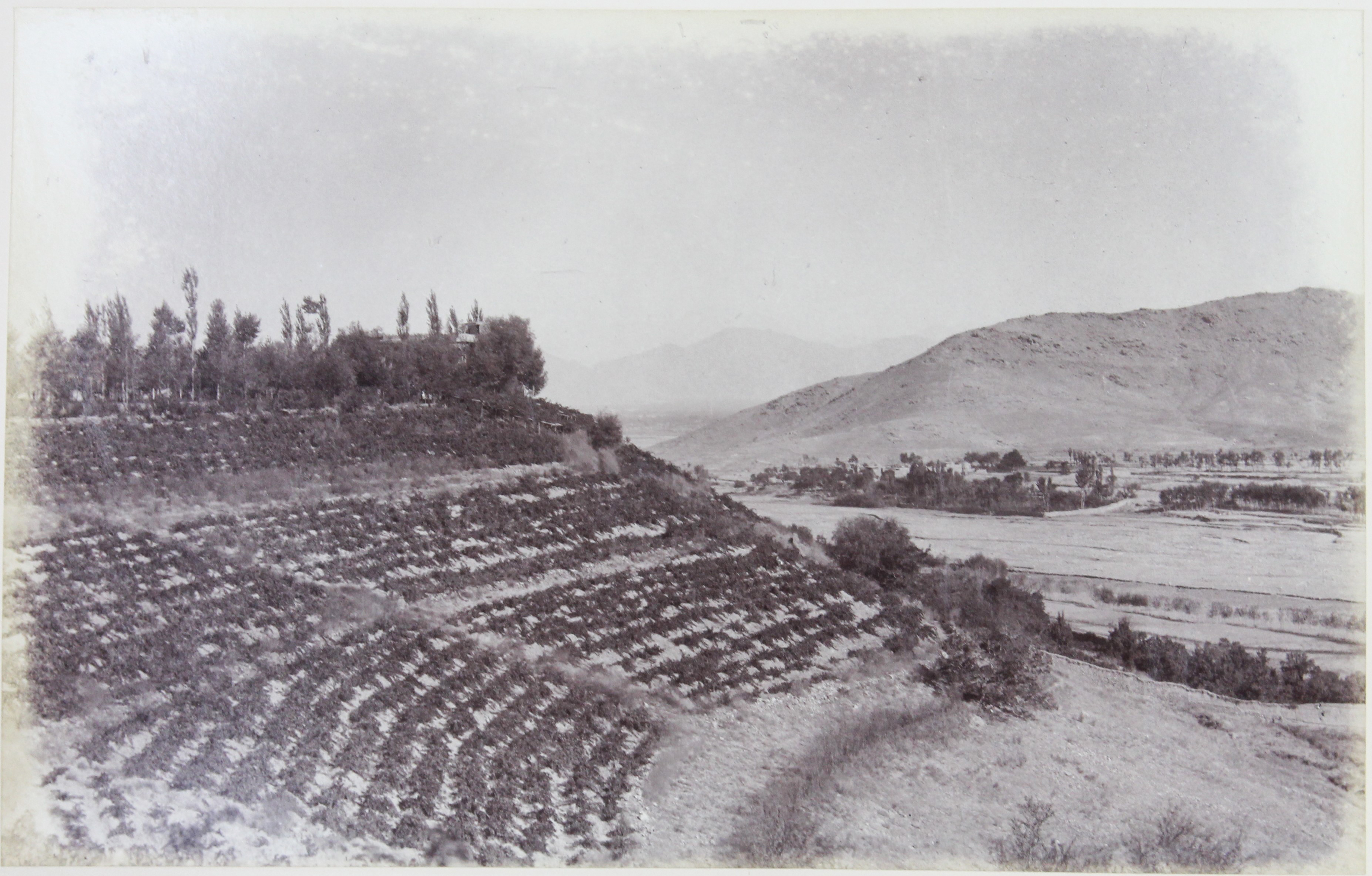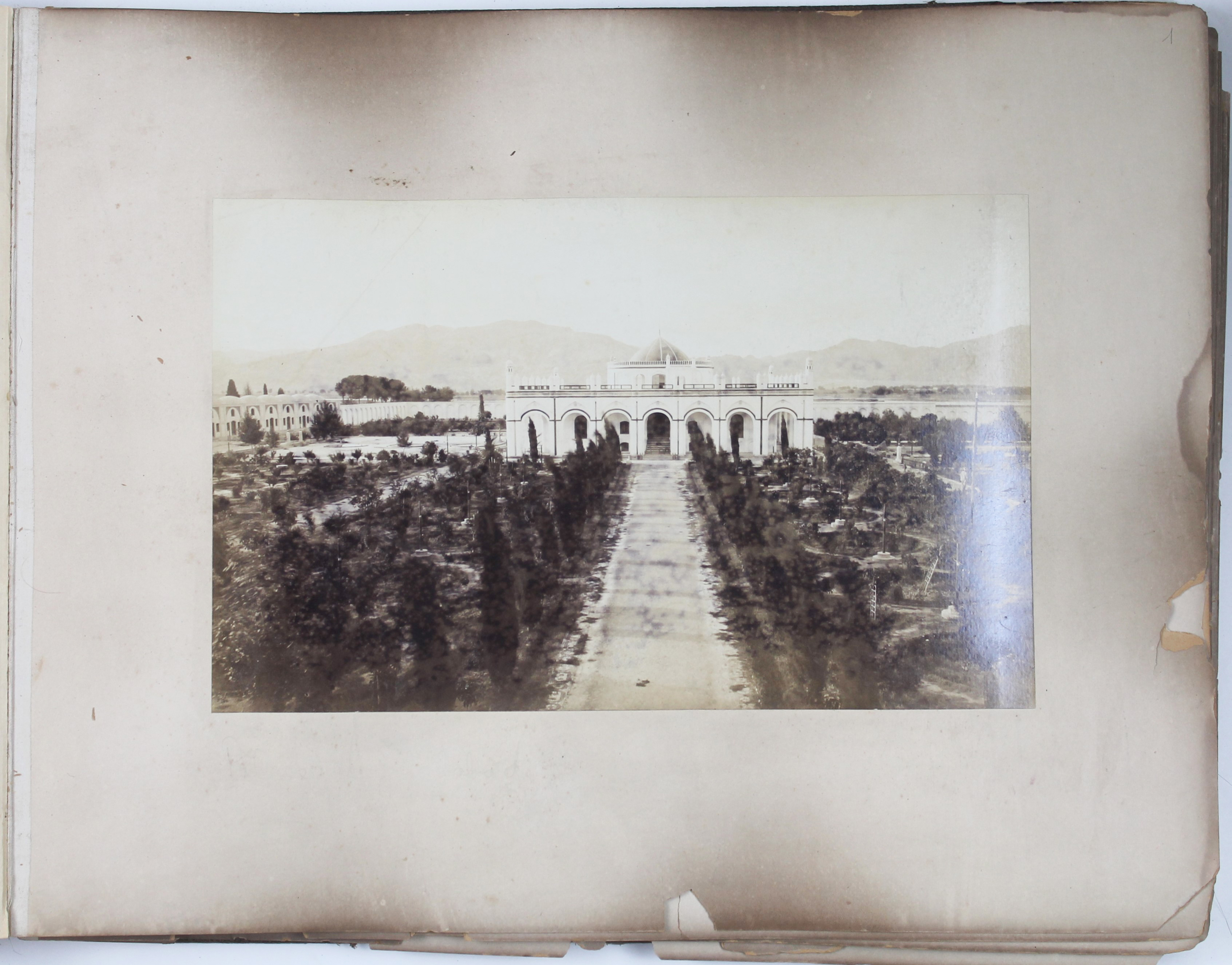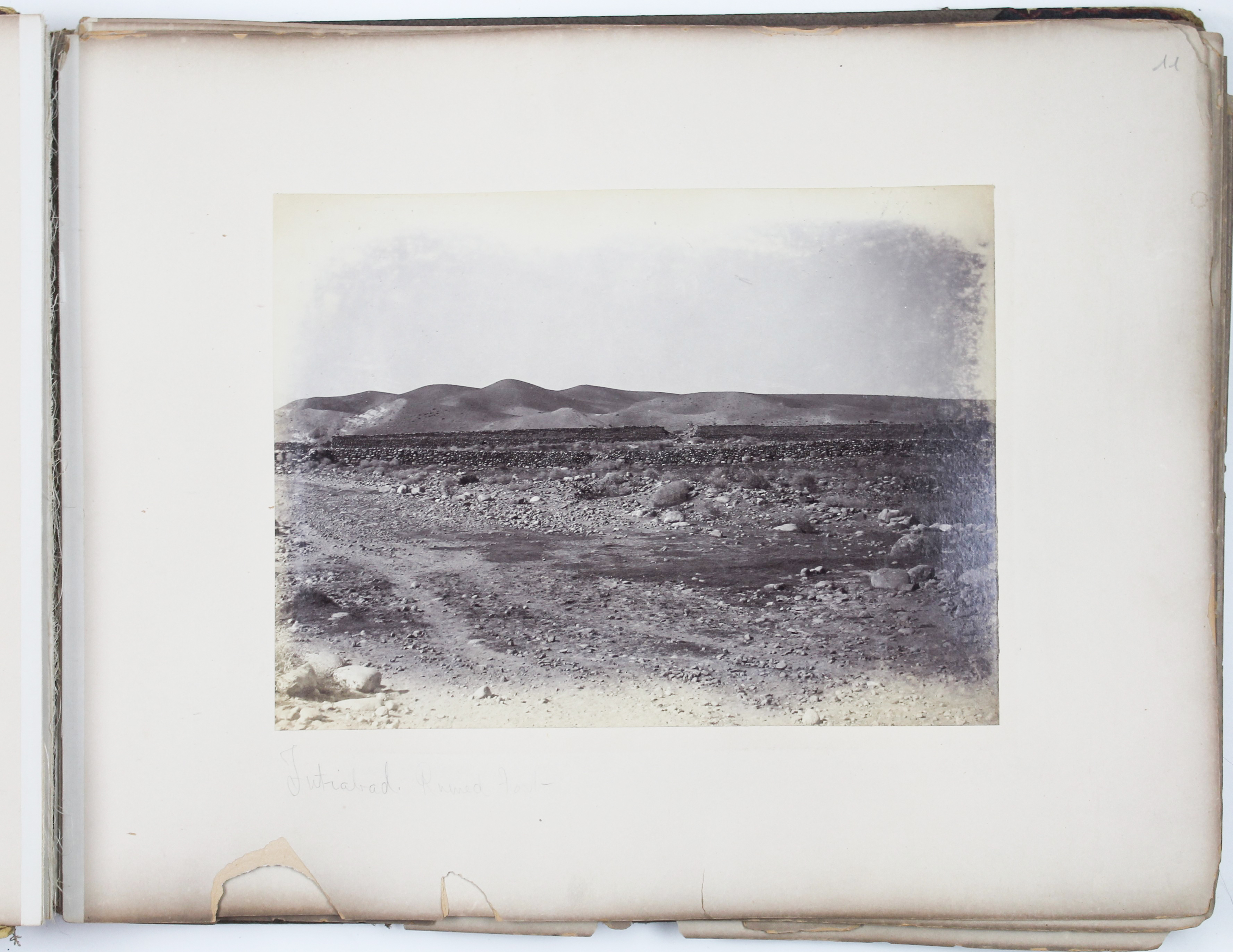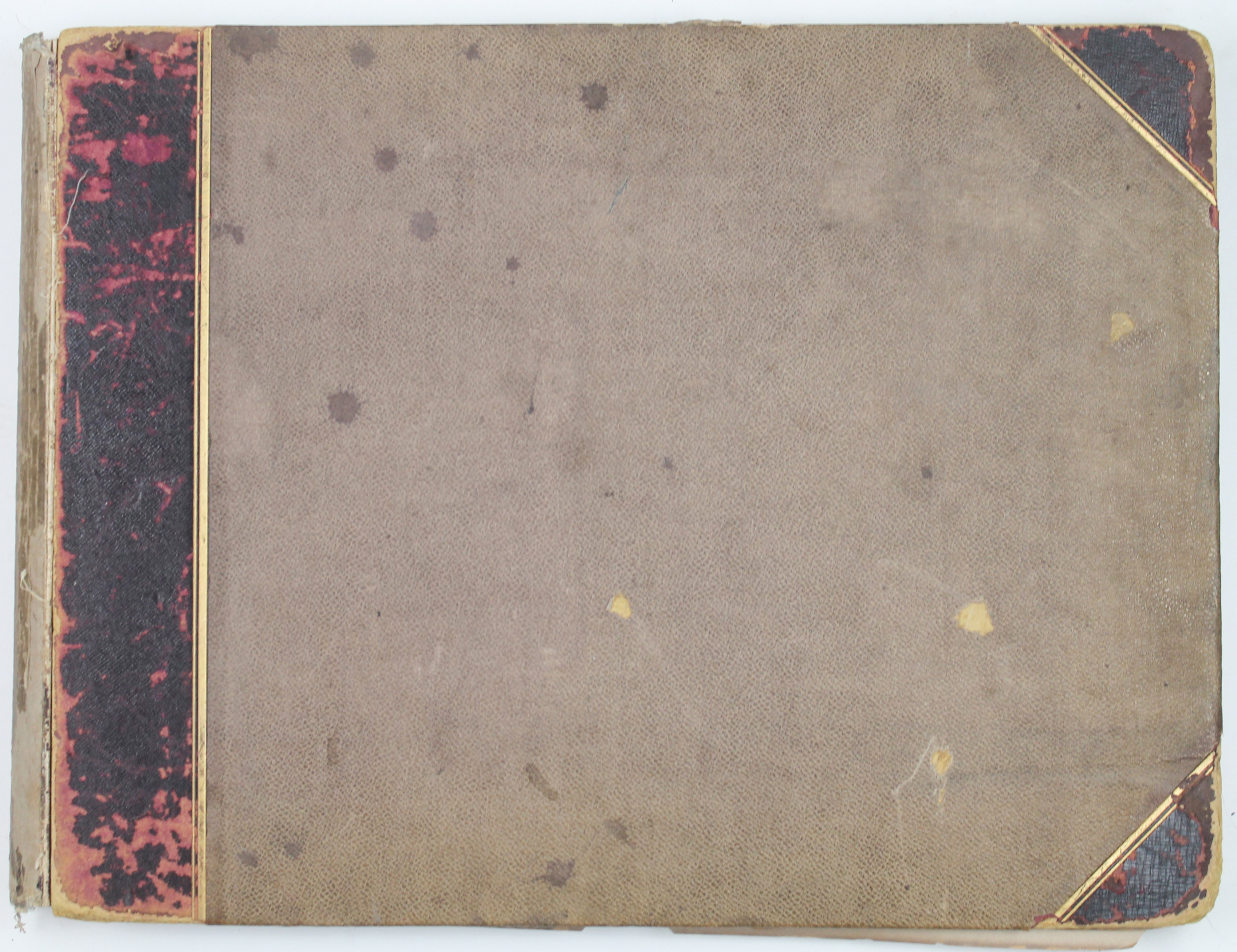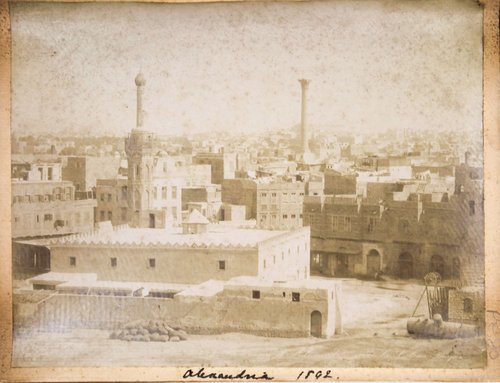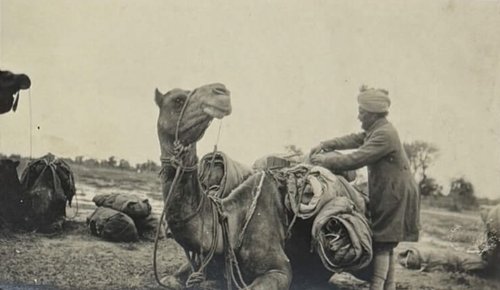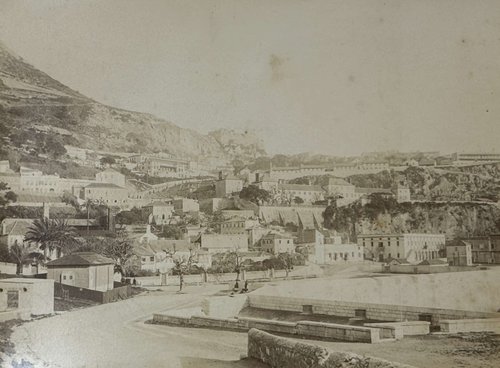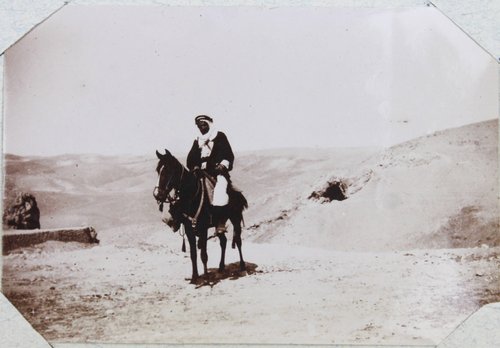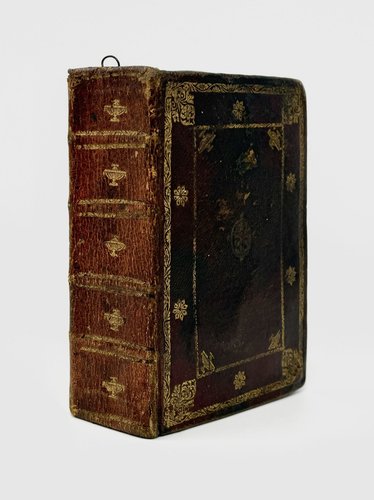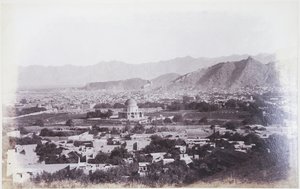


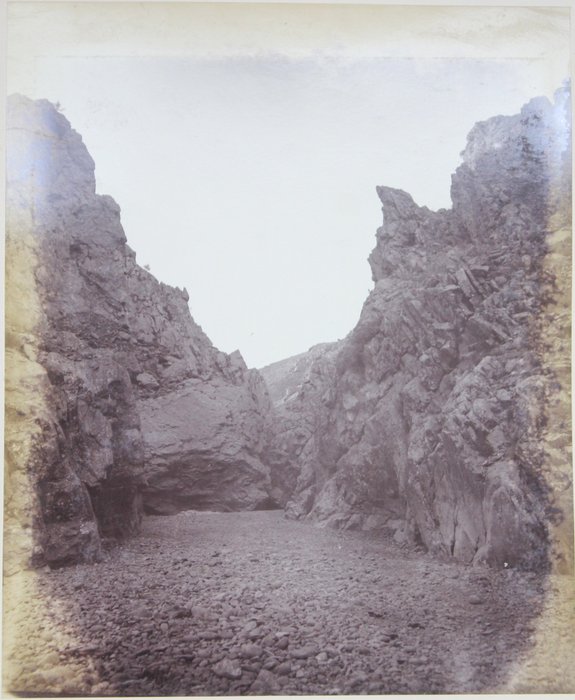
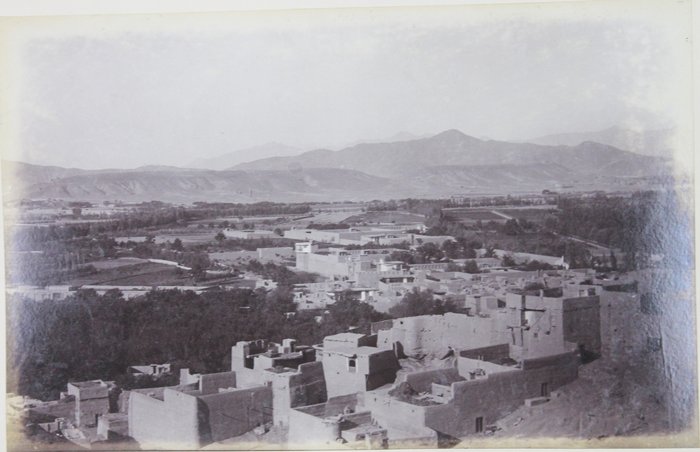
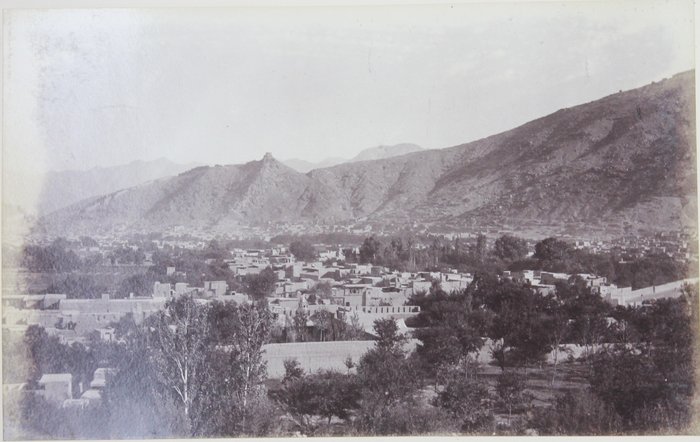
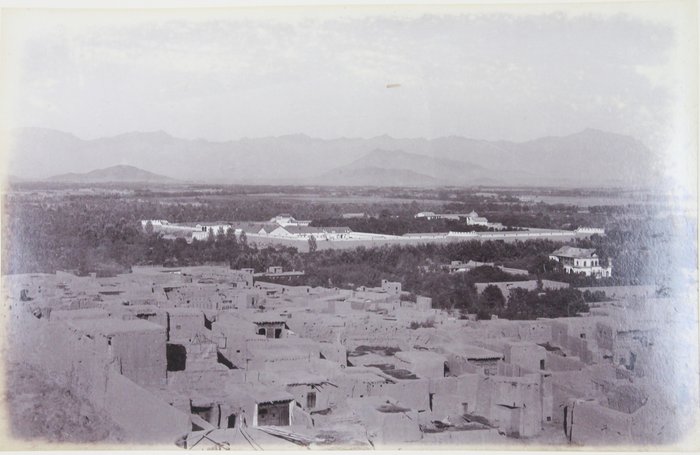
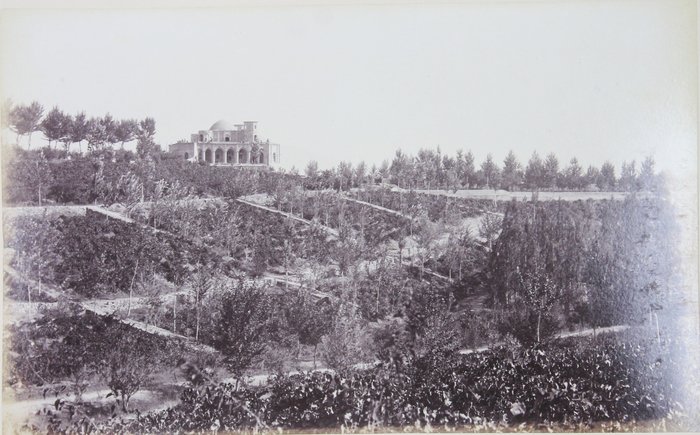
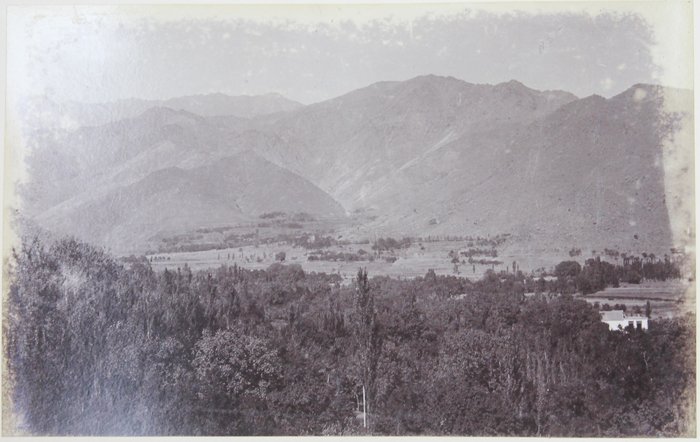
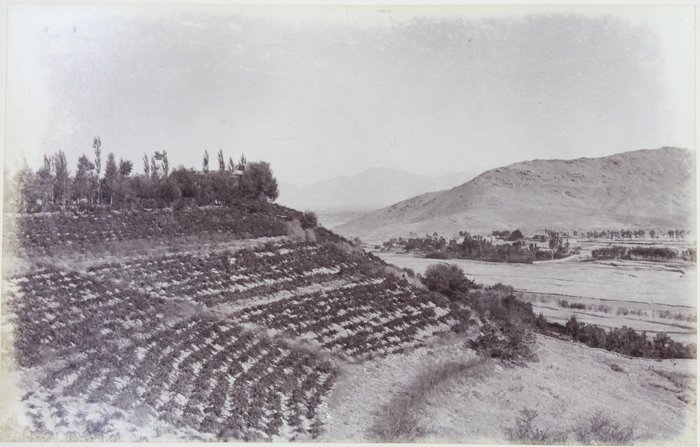

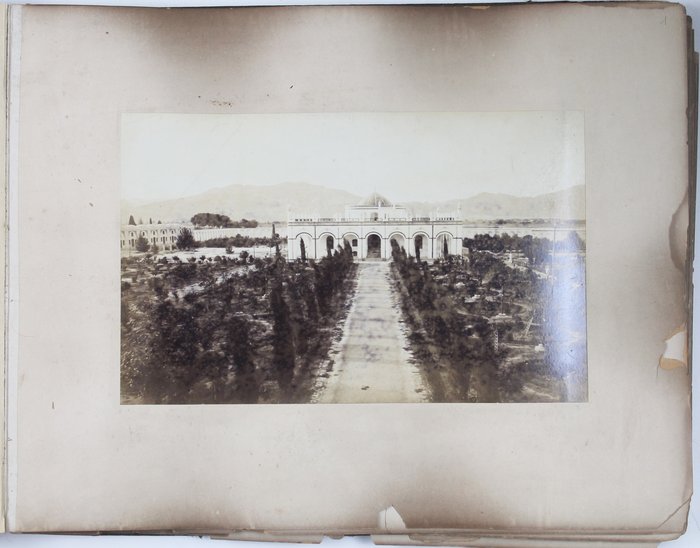


#PD95
Ca. 1880s
Oblong Folio album (ca. 36,4x47,4 cm). 21 card stock leaves (12 blank). With 17 mounted large-size albumen photographs ca. 19,5x31 cm (7 ¾ x 12 ¼ in), including one four-part folding panorama ca. 24,4x30,3x121,2 cm (9 ½ x 48 in). All photos but one with period pencil captions (in English) on the mounts. Period half-leather binding in two colors. Boards rubbed, spine worn, about eight leaves loose, several leaves with the loss of the fragments at the edges (no photos affected), but otherwise a very good album with strong, interesting photos.
Historically interesting collection of excellent professional photographs showing the iconic sites of Afghanistan in their early state.
As follows from the captions, the compiler was an English photographer, who likely visited Afghanistan two decades after the end of the Second Anglo-Afghan War (1878-1880). At the time, Afghanistan functioned as a British-influenced protectorate, maintaining internal autonomy but relying on British oversight in matters of foreign policy.
The album features seventeen well-executed photographs, including a four-part folding panorama of Kabul, showing the Timur Shah Durrani Mausoleum (restored), the Ameer’s Palace, and the Khyber Pass in the background. Among the other identified photos are about five close-up views of local landmarks – Bagh-i-Shahi Palace and the Royal Park in Jalalabad, as well as the ruins of the Balla-Hissar fort (destroyed during the Second Anglo-African War in 1880) in Kabul. Another interesting photo illustrates the famous Paghman Valley, with a focus on the now-destroyed Harem Serai. The rest of the album mostly shows excellent topographic views of Kabul, Deh Afghanistan, the Valley of the Shadow of Death, and a view looking up toward the Hindu Kush Mountains.
Overall, historically interesting collection of excellent professional photographs showing the iconic sites of Afghanistan in their early state.

